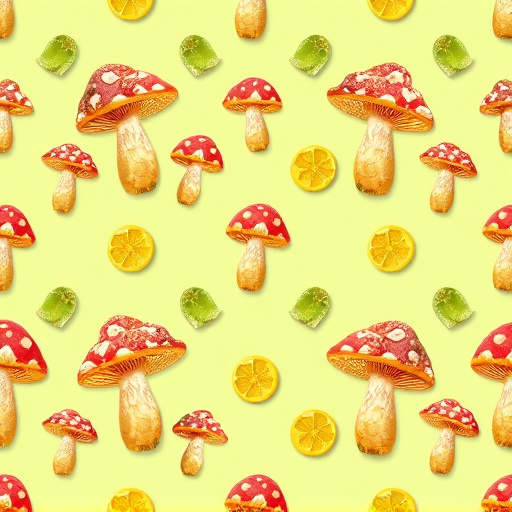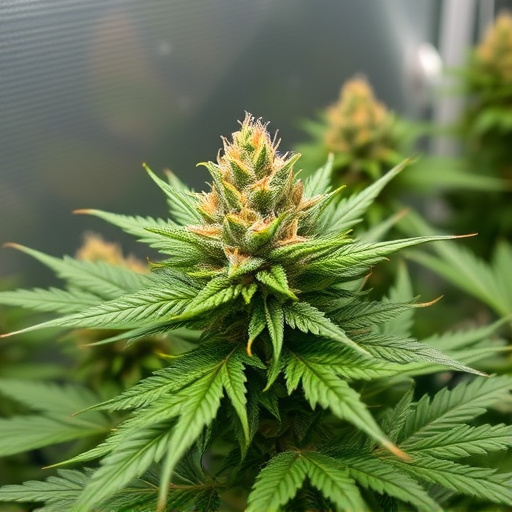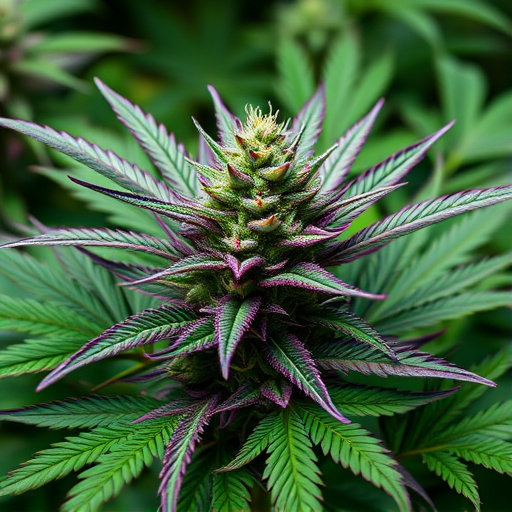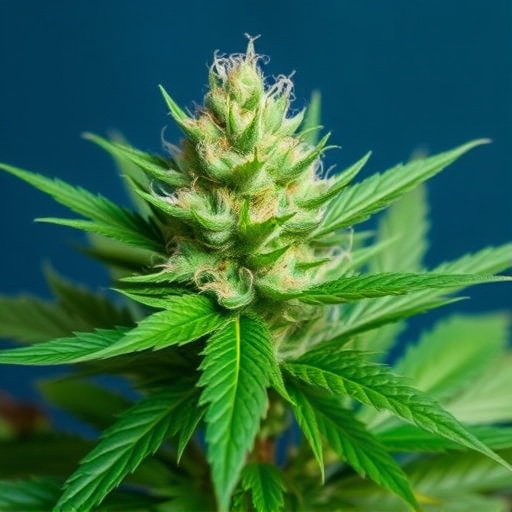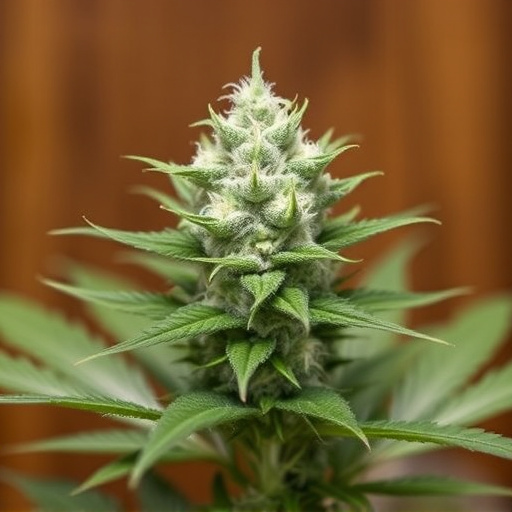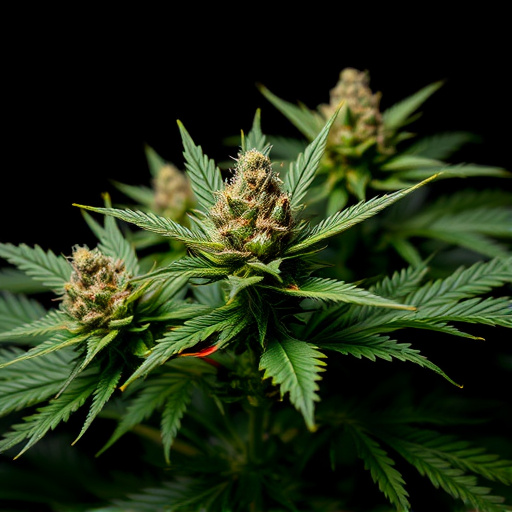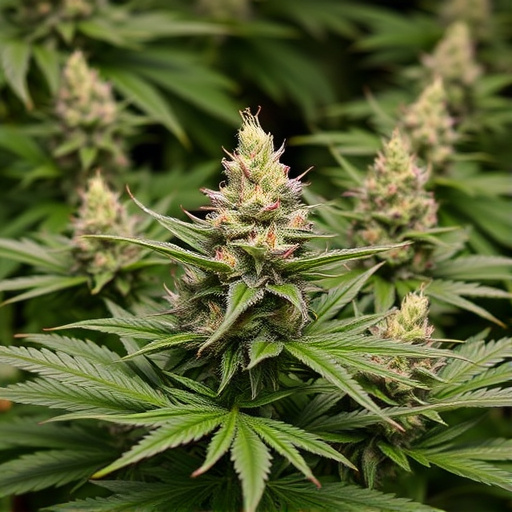Cannabis genetics play a pivotal role in developing the plant's distinctive foliage colors, such as purple, red, and blue, through complex chemical interactions resulting in anthocyanin production. Environmental factors like sunlight, temperature, and soil nutrients further influence the type and concentration of these pigments, making each classic cannabis strain unique. Growers meticulously control these conditions to cultivate strains with desirable colors for both aesthetic appeal and potential therapeutic benefits. Classic strains like Purple Haze, Granddaddy Purple, Blue Dream, and Red Diesel, renowned for their vibrant hues, have secured a prominent place in the cannabis community due to their distinctive appearances and robust effects.
Uncover the enigmatic allure of purple, red, and blue weed—a rare sight in the cannabis world. This article delves into the genetic secrets behind these vibrant hues, exploring how specific traits are passed down through generations. We’ll uncover environmental triggers that can intensify these colors and highlight some of the most renowned classic cannabis strains known for their distinctive pigmentation and unique effects.
- Understanding Cannabis Genetics: The Basis for Purple, Red, and Blue Pigments
- Environmental Factors: How They Influence the Development of These Rare Colors
- Classic Cannabis Strains Known for Their Unique Coloration and Traits
Understanding Cannabis Genetics: The Basis for Purple, Red, and Blue Pigments
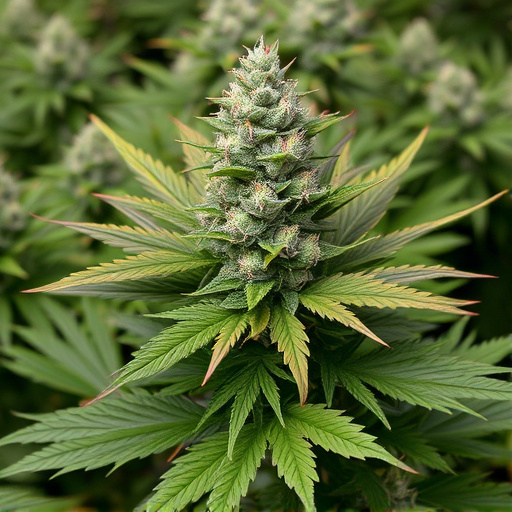
Cannabis genetics play a pivotal role in the development of unique colors like purple, red, and blue in the plant’s foliage. These distinctive pigments are not merely aesthetic; they are the result of complex chemical interactions within the plant. The classic cannabis strains known for their vibrant hues often possess specific genetic traits that lead to the production of anthocyanins, a type of pigment responsible for shades of red, purple, and blue in various plants, including cannabis.
The genetic makeup of a cannabis plant dictates the type and concentration of anthocyanins produced. Certain genes encode for specific enzymes involved in anthocyanin synthesis, influencing the final color of the flowers. Moreover, environmental factors like light intensity and temperature can interact with these genetics, further enhancing or altering the pigment expression, making each strain’s coloration unique. Understanding these genetic underpinnings offers growers insights into cultivating desired classic cannabis strains known for their vibrant colors and potential therapeutic benefits.
Environmental Factors: How They Influence the Development of These Rare Colors

The development of rare cannabis colors, such as purple, red, and blue, is influenced by various environmental factors. These include sunlight exposure, temperature fluctuations, and nutrient levels in the soil. For instance, higher levels of certain pigments like anthocyanins are produced in response to cooler temperatures and increased UV light, resulting in vibrant purples and reds. Nutrient deficiencies or excesses can also trigger color changes; for example, nitrogen deficiency may lead to red or purple hues while high calcium levels can promote blue shades.
In the world of classic cannabis strains, these environmental factors play a significant role in cultivating desirable colors. Growers often manipulate conditions to enhance pigment expression, creating visually striking flowers that not only captivate the eye but also potentially offer unique therapeutic properties associated with specific colors. Thus, understanding and optimizing these environmental influences are key to producing high-quality, beautifully colored cannabis strains.
Classic Cannabis Strains Known for Their Unique Coloration and Traits
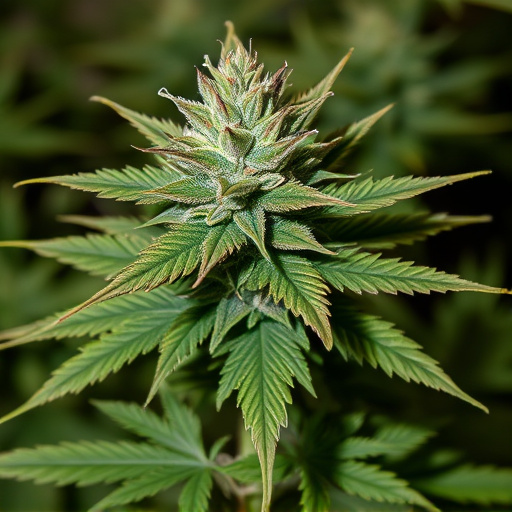
Cannabis enthusiasts often marvel at the diverse colors and unique traits that different strains offer, with some cultivating a reputation for their striking visual appeal. Among these, classic cannabis strains have captured the attention of many due to not only their distinct coloration but also their well-defined effects and flavors.
Breeders have meticulously cultivated and refined these classic strains over time, resulting in a variety of cannabis that proudly display vibrant hues of purple, red, and blue. These colors are often associated with specific cannabinoid profiles and terpene compositions, which contribute to the strains’ distinct aromas, tastes, and potential therapeutic benefits. Classic cannabis strains known for their captivating appearances and robust effects include Purple Haze, Granddaddy Purple, Blue Dream, and Red Diesel—each offering a unique blend of visual allure and sensory experiences that have solidified their place in the cannabis community.
In conclusion, the rare colors purple, red, and blue in weed are a result of both genetic diversity within cannabis species and environmental influences. Understanding these factors not only sheds light on the captivating hues but also highlights the unique characteristics of certain classic cannabis strains known for their distinctive coloration. By recognizing the interplay between genetics and environment, cultivators can further explore and celebrate the diverse beauty found in this remarkable plant.
